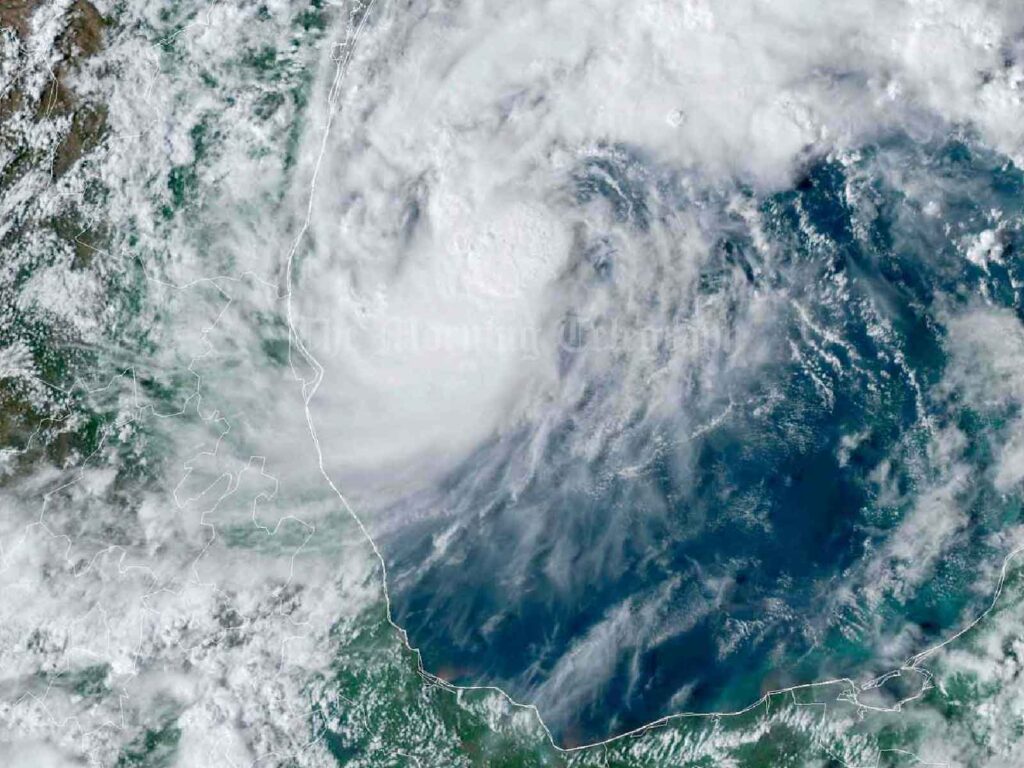
MIAMI, October 6, 2024 — Residents of Florida were put on alert Sunday as Tropical Storm Milton, currently situated off the coast of Mexico, is projected to rapidly intensify into a major hurricane before making landfall midweek on the Gulf Coast.
The National Hurricane Center in Miami reported, “Milton is moving slowly but is expected to strengthen rapidly.” With increasing confidence in the forecast, officials warned that a powerful hurricane could bring life-threatening conditions to portions of Florida’s west coast around Wednesday.
Forecast models indicate that Milton may make landfall just north of Tampa Bay and remain a hurricane as it progresses across central Florida into the Atlantic Ocean. This trajectory appears to spare other southeastern states that are still recovering from Hurricane Helene, which recently caused catastrophic damage and claimed at least 230 lives from Florida into the Appalachian Mountains.
Florida Governor Ron DeSantis stated, “It’s clear that Florida is going to be hit hard — I don’t think there’s any scenario where we don’t have major impacts at this point.” He urged residents to prepare their hurricane plans, emphasizing that they have time to do so through Tuesday.
In anticipation of the storm, DeSantis expanded his state of emergency declaration to 51 counties, advising residents to expect power outages and disruptions. He encouraged those in evacuation zones to leave and prepare a week’s worth of food and water.
Kevin Guthrie, executive director of the Florida Division of Emergency Management, echoed the urgency, stating, “I highly encourage you to evacuate” if you’re in an evacuation zone. He noted that preparations were underway for a significant evacuation, likely the largest since Hurricane Irma in 2017.
The state has taken steps to prepare emergency fuel sources and electric vehicle charging stations along evacuation routes and has identified locations for temporary housing. Guthrie advised those living in newer homes built after Florida’s 2004 building codes and who are not in evacuation zones to remain off the roads.
To assist with the impending storm, as many as 4,000 National Guard troops have been mobilized to help with debris removal. DeSantis has also recalled Florida crews sent to assist North Carolina following Hurricane Helene.
Meanwhile, FEMA Administrator Deanne Criswell defended her agency’s response to Hurricane Helene amidst misinformation that has circulated in the wake of the disaster. “This kind of rhetoric is not helpful to people,” Criswell stated, emphasizing the need for political rhetoric to prioritize community support.
Criswell assured that FEMA is already preparing for Milton, coordinating with state officials to assess the resources needed for an effective response once the storm makes landfall.
As of early Sunday, Tropical Storm Milton was located approximately 860 miles (1,385 kilometers) west-southwest of Tampa, with maximum sustained winds of 60 mph (95 kph) and moving east at 5 mph (7 kph). The hurricane center advised residents of Mexico’s Yucatán Peninsula, the Florida Peninsula, the Florida Keys, and the northwestern Bahamas to monitor the system closely. Forecasters predict that heavy rainfall, potentially reaching up to a foot (30 centimeters) in some areas through Wednesday night, could lead to significant flooding across Florida.
In the Atlantic, Hurricane Kirk has weakened to a Category 2 storm, while Hurricane Leslie continues to move over the ocean, posing no immediate threat to land.




